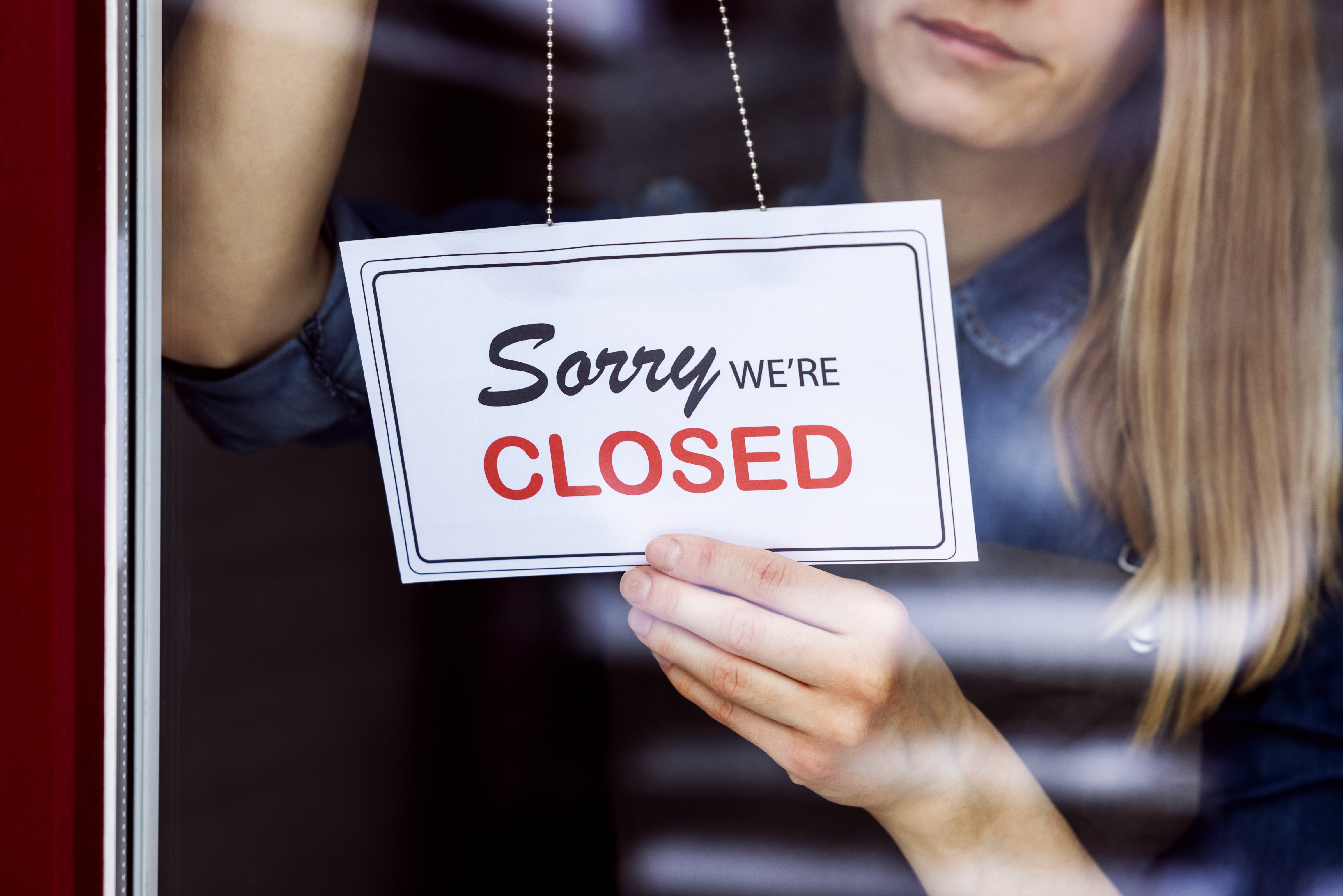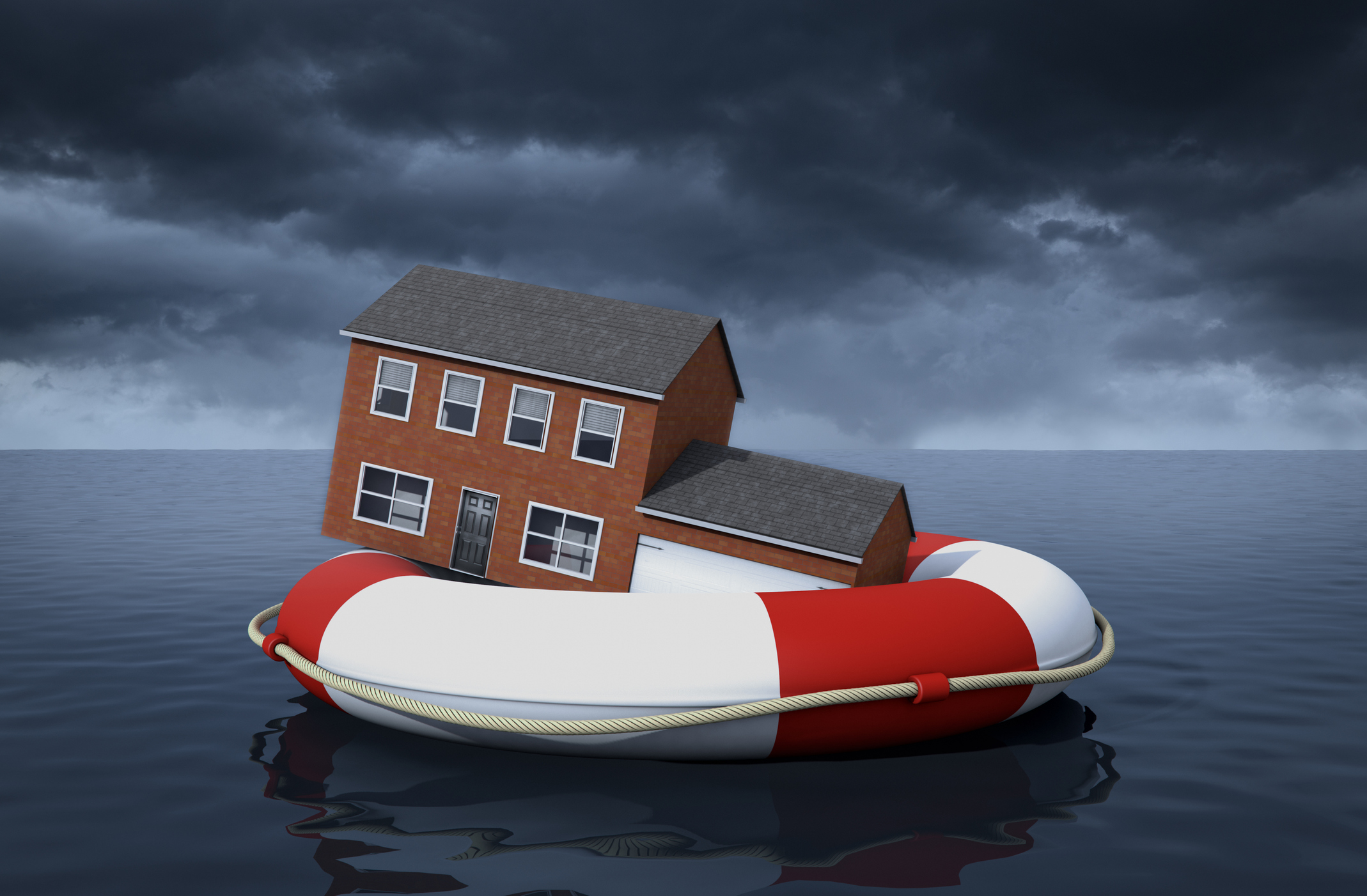How to Cut Your Auto and Home Insurance Bills This Year
Why auto and home insurance costs are on the rise, and what you can do about it.


Consumers have been battling higher prices everywhere, but rate hikes for automobile and homeowners insurance have been especially nasty. Premiums in both markets skyrocketed over the past couple of years.
“It has been a historic period of increases,” says Stephen Crewdson, senior director of insurance intelligence at data analytics company J.D. Power. “Our data goes back 30 years, and I’ve never seen something like this.”
The average price of car insurance spiked more than 20% over the 12 months ending in February 2024 and more than 38% since 2020, according to the consumer price index. Insurers requested an average premium rate increase of 11.3% for homeowners insurance in 2023, but that impact is not spread evenly nationwide.

Sign up for Kiplinger’s Free E-Newsletters
Profit and prosper with the best of expert advice on investing, taxes, retirement, personal finance and more - straight to your e-mail.
Profit and prosper with the best of expert advice - straight to your e-mail.
Some states, including New Jersey, Utah and Vermont, still have relatively affordable home-owners insurance markets, but others, such as Colorado, New Mexico and Texas, are dealing with much more expensive premiums. In California and Florida, homeowners are struggling just to find coverage. And it doesn't seem like relief is coming soon, despite cooling inflation; Insurify predicts a total 22% increase in cat insurance full-coverage premiums by the end of the year, with costs increasing by more than 50% in California, Missouri and Minnesota, due to storms and wildfires in those states.
Given that auto and home insurance are essentially mandatory, these premium increases may feel particularly painful. Nearly every state requires drivers to have at least basic liability auto insurance coverage to pay for damage they cause to others in accidents. Lenders typically require homeowners with a mortgage to buy insurance. And even if you own your home outright, it’s not wise to leave your property unprotected.
Although the hikes might seem like a money grab, insurers are also getting hammered. The U.S. property insurance industry lost $38 billion in 2023, the largest underwriting loss in a decade, according to A.M. Best, a credit-rating agency that specializes in the insurance industry.
What’s causing all this havoc in the insurance markets? Is there any relief in sight? And what can you do to trim your costs?
Why auto insurance premiums are rising
More crashes. To understand the auto insurance market, you need to go back to 2019, says Crewdson. “That was the last relatively normal year for auto insurance.” In 2020, the pandemic hit. Suddenly, people started driving much less as they stopped commuting, going on vacation and seeing friends and family. “Miles driven went down, so claims went down.”
Because insurers collected more than they paid in claims, they returned that money to consumers through refund checks and reduced premiums. But in 2021, drivers returned to the road — and so did car accidents. Dangerous driving has increased post-pandemic, with more people speeding, driving recklessly and becoming distracted with mobile devices and in-vehicle screens. “People are looking down when they drive now,” says Jeff Schlitt, owner of Schlitt Services, an independent insurance agency in Vero Beach, Fla.
The result has been more crashes and claims. Car crash fatalities were up more than 10% in 2022 compared with 2020, according to the most recent data available from the National Highway Traffic Safety Administration.
More-expensive repairs. “Vehicles are built with all these new safety features, which is great but adds to the cost,” says Schlitt. “It used to cost $300 to replace a broken windshield, but now it can cost over $1,000 with all the technology.”
Auto repair shops still deal with inflation, supply chain issues and labor shortages. They are passing on these costs to consumers and their insurers. Repairs are taking longer as garages wait on parts, meaning auto insurance policies must provide policyholders with longer vehicle rentals.
Finally, used cars have been retaining more of their value post-pandemic because of higher demand. If you total your car, most auto insurance policies pay the value of your vehicle on the day of the crash. Because used vehicles are worth more, on average, than they used to be, they are more expensive for insurers to replace.
More lawsuits. If you cause an accident, you’re liable for covering the repairs and medical bills of the injured parties. Inflation has pushed up these costs for insurers as well.
These days, people are more likely to sue and to be awarded much larger settlements for their injuries than in the past. Auto insurance policies usually cap what they pay for lawsuits against you at $500,000 if you buy the maximum coverage. You might buy an umbrella policy with additional liability coverage to protect against lawsuits beyond your auto liability limit. As seven-figure settlements become more common, umbrella insurance costs are also rising.
Tips to save on auto insurance
Auto insurance premiums are increasing as insurers adjust to this perfect storm of issues. “Our industry operates slowly on these numbers. Aggregating takes time,” says J.D. Power’s Crewdson. Auto insurers should be pricing these factors into policies, slowing future rate increases. But how can you save money until then?
Check for discounts. “Insurers offer many discounts that consumers don’t know about,” says Crewdson. Taking a defensive driving course or installing an antitheft device on your vehicle are often ways to save money. If you have a student driver, you may get a discount if he or she earns good grades at school.
You could also qualify for discounts by paying your premium annually and opting for electronic statements. Finally, depending on the insurer, you might get a lower rate if you’re older than 55, a military member or veteran, a federal employee, or a member of certain academic, professional and trade organizations.
Save with safe driving. Many insurers offer discounts if you agree to use a telematics system to monitor you driving habits — through either an app you download on your phone or a device you temporarily plug into your vehicle’s diagnostic port.
“You agree to have the insurer ‘ride around’ with you for 90 days,” says Schlitt, the insurance agent from Florida. The app or device checks for risky behaviors such as hard stops, quick acceleration and driving after midnight, when the roads are more dangerous because of drunk drivers.
Most insurers will give you a premium credit of at least 10% just for agreeing to the test, says Schlitt. And companies usually don’t penalize bad driving; they just withhold the discount for drivers who don’t meet the safety standards.
If you work remotely and aren’t commuting every day, you could set up a mileage-based auto insurance policy. Your premium depends on how many miles you drive each month, so people who spend little time on the road can save.
Pay for minor repairs out of pocket. Auto insurance companies increase your rates for every claim you make. You may come out ahead in the long run by paying for small repairs out of pocket.
“If you call roadside assistance or make a claim to repair a crack in a window, that didn’t count in the past, but today it does. Only use your insurance when you truly need it,” says Schlitt.
Estimate insurance costs before buying a car. Before you purchase a new vehicle, check how much it would cost to insure, suggests Matt Hagen, a director at Assurance IQ, an online insurance marketplace. Newer vehicles with more technology are more expensive to insure, he says. So are sports cars, which have higher accident rates on average.
Drop rental coverage if you have a backup. If you have more than one vehicle available, consider dropping your auto policy’s rental coverage, which provides you with a car to drive if yours is in the shop for a lengthy repair. Instead, drive the backup vehicle.
Increase your deductible. The deductible is what you pay out of pocket before insurance kicks in. Raising your deductible lowers your monthly premium. Make sure to keep enough money in savings to cover your deductible in case of an accident.
Remove collision coverage from old vehicles. If you’re driving an old vehicle that isn’t worth much, consider dropping the collision and comprehensive coverage while keeping liability. Your insurance would pay to repair the damage you cause to others but not to repair or replace your vehicle. “If you can afford a down payment on a new vehicle after a crash, this strategy could make sense,” says Hagen. You must have paid off the car first, as lenders require you to maintain insurance when you have an outstanding auto loan.
Bundle multiple policies with one insurer. Insurers offer discounts if you buy multiple types of insurance from them. For example, if you purchase auto, home, boat and/or life policies from one insurer, you could qualify for a discount on all the premiums. If you want umbrella insurance, you usually get a lower premium by buying it from the same company that handles your auto insurance, says Schlitt.
Why homeowners insurance is getting more expensive
Disasters nationwide. Homeowners insurance premiums are rising primarily for one reason: The country is being hit with increasingly intense natural disasters, such as hurricanes, blizzards and wildfires, and dealing with the aftermath is getting more expensive.
“It’s happening everywhere, even in places that don’t come to mind right away. A hailstorm in the Midwest might not make national news, but it could still create massive damage,” says Crewdson.
Rising costs from inflation, labor shortages and supply-chain issues mean home repairs have become more expensive. If you rent your home and buy renters insurance, you’re likely seeing an increase in premiums, too.
In California and Florida, the insurance market has become so challenging that many homeowners struggle to buy insurance. “If you have a roof that’s more than 15 years old in Florida, your odds of getting insurance are nil,” says Mike Moran, executive director of Florida PACE, a public agency that provides financing for hurricane-resistant home improvements. “For many people, it’s not a question of saving money but figuring out how they can even get home insurance.”
Regulatory issues. Though more-costly disasters are the root cause of insurance woes in California and Florida, government and regulatory issues haven’t helped.
“Compare these states to Texas,” says Crewdson, who notes the state “has also seen rising premiums and a streak of natural disasters, but in-surers haven’t left the market.”
California’s Department of Insurance restricted insurers from raising premiums to compensate for higher costs. In response, insurers pulled out of areas vulnerable to wildfires. California has since started allowing future rate increases, which could encourage insurers to return.
In Florida, there were problems with contractors running roofing insurance scams. The contractors would offer homeowners a free roof by finding signs of storm damage, though the damage wasn’t enough to justify an insurance claim. The contractors would then sue insurers for refusing payment, hoping to get a large settlement in court far beyond the cost of the roof. Even though Florida represented just 8% of national homeowners claims in 2019, it accounted for more than 76% of all litigation claims. “Carriers took big losses, and the money went to attorneys, not to repair homes,” says Schlitt.
In 2023, Florida passed significant tort reform. There are signs that insurers are returning to the market, slowing down rate increases, and even reconsidering coverage for homes with older roofs, says Schlitt. For example, six new property insurers entered the Florida market in January. But there’s still a backlog. He expects it will take a couple of years for markets to stabilize.
Tips to save on homeowners insurance
While changes to address regulatory and legal issues could help in markets that are facing those difficulties, the country is still dealing with more natural disasters. So what can you do to qualify for a more affordable policy?
Use all possible discounts. Insurers may offer discounts for paying your premium annually instead of monthly, switching to paperless statements, being a nonsmoker, being a loyal customer, avoiding claims for several years, and bundling your homeowners insurance with other policies, such as auto, boat and life.
Keep your home safe. Taking steps to protect your home can prevent costly claims and qualify you for other discounts. For example, insurers give credit for setting up a fire-alarm and home-security system. You could also set up leak-detection devices to catch flooding early. If your heating, plumbing and electrical systems are getting up there in age, consider replacing them for another discount. Finally, you could save by removing a dangerous “attractive nuisance,” such as a trampoline, pool or treehouse.
Invest in home hardening. Home-hardening renovations protect your property against the most severe local risks. In a fire zone, you could replace your roof, deck and walls with fire-resistant materials. In an area vulnerable to hurricanes, you might replace the roof with one more resistant to wind and leaks, buy a sump pump for the basement, and install stormproof doors and windows.
“You see a photo after a hurricane. Five homes are flattened, while one looks untouched. These home-hardening methods work,” says Moran, from Florida PACE. Insurers may require these upgrades in especially risky areas. Making the investment increases your chances of qualifying for a policy and possibly getting better rates.
Raise your deductible. Increasing your deductible reduces your monthly premium, though you’ll pay more out of pocket when filing a claim. If you use this strategy, ensure you’ve saved enough cash in a “deductible fund” first, recommends Hagen, from Assurance IQ.
Improve your credit score. In some states, insurers can consider your credit score when setting insurance premiums. By improving your credit, you can save on your home and auto insurance premiums. To boost your score, make your monthly loan and credit card payments on time, and limit your credit card balances to no more than 30% of your available credit.
Don’t cancel coverage. With the cost of insurance soaring, 16% of Americans are considering canceling their homeowners or renters insurance, according to a 2023 survey from Assurance IQ. “I would strongly urge consumers to rethink this decision. The long-term risk can outweigh the immediate financial gain,” says Hagen.
Insurers consider whether you maintain ongoing coverage as a factor in their decisions. “Not only are you putting your home at risk, but going without insurance can hurt your ability to qualify in the future.”
Note: This item first appeared in Kiplinger's Personal Finance Magazine, a monthly, trustworthy source of advice and guidance. Subscribe to help you make more money and keep more of the money you make here.
Related Content
Get Kiplinger Today newsletter — free
Profit and prosper with the best of Kiplinger's advice on investing, taxes, retirement, personal finance and much more. Delivered daily. Enter your email in the box and click Sign Me Up.

David is a financial freelance writer based out of Delaware. He specializes in making investing, insurance and retirement planning understandable. He has been published in Kiplinger, Forbes and U.S. News, and also writes for clients like American Express, LendingTree and Prudential. He is currently Treasurer for the Financial Writers Society.
Before becoming a writer, David was an insurance salesman and registered representative for New York Life. During that time, he passed both the Series 6 and CFP exams. David graduated from McGill University with degrees in Economics and Finance where he was also captain of the varsity tennis team.
-
 The AI Doctor Coming to Read Your Test Results
The AI Doctor Coming to Read Your Test ResultsThe Kiplinger Letter There’s big opportunity for AI tools that analyze CAT scans, MRIs and other medical images. But there are also big challenges that human clinicians and tech companies will have to overcome.
By John Miley Published
-
 The Best Places for LGBTQ People to Retire Abroad
The Best Places for LGBTQ People to Retire AbroadLGBTQ people can safely retire abroad, but they must know a country’s laws and level of support — going beyond the usual retirement considerations.
By Drew Limsky Published
-
 How to Get Apple TV Plus for just $2.99
How to Get Apple TV Plus for just $2.99For a limited time, you can get three months of Apple TV Plus for just $2.99 per month. Here’s how to get the deal.
By Rachael Green Published
-
 Don’t Panic About the “Retail Blackout” – See Which Stores Are Closing (and Which Aren’t) for Easter 2025
Don’t Panic About the “Retail Blackout” – See Which Stores Are Closing (and Which Aren’t) for Easter 2025Dozens of major retailers are planning to close their doors on April 20. Find out which of your go-to stores are on the list.
By Rachael Green Published
-
 Home Insurance: How to Cut Costs Without Losing Coverage
Home Insurance: How to Cut Costs Without Losing CoverageNatural disasters are causing home insurance premiums to soar, but don't risk dropping your coverage completely when there are ways to keep costs down.
By Jared Elson, Investment Adviser Published
-
 Why Homeowners Insurance Has Gotten So Very Expensive
Why Homeowners Insurance Has Gotten So Very ExpensiveThe home insurance industry is seeing more frequent and bigger claims because of weather, wildfires and other natural disasters.
By Karl Susman, CPCU, LUTCF, CIC, CSFP, CFS, CPIA, AAI-M, PLCS Published
-
 Zelle App Shut Down? Why Zelle Has Discontinued Its App
Zelle App Shut Down? Why Zelle Has Discontinued Its AppWith the Zelle app shut down, learn how you can still use Zelle and which other mobile payment apps you might want to consider.
By Paige Cerulli Published
-
 Use This 1-Year CD if You’ll Owe Taxes Next Year
Use This 1-Year CD if You’ll Owe Taxes Next YearA one-year CD allows you to set money aside now for taxes you'll owe next year. We'll show our best choice.
By Sean Jackson Published
-
 How to Lower Home Insurance Rates When Climate Change Increases Costs
How to Lower Home Insurance Rates When Climate Change Increases CostsA top insurer warns the damage climate change causes is making it cost-prohibitive for insurers in some areas. Learn how to protect your home and lower costs.
By Sean Jackson Published
-
 Stick to the Plan: Don't Panic During Economic Uncertainty
Stick to the Plan: Don't Panic During Economic UncertaintyTake a breath and step back. Focus on a solid fiscal foundation to stabilize your investments during stock market volatility.
By Eric Lahaie, CFS®, RICP® Published